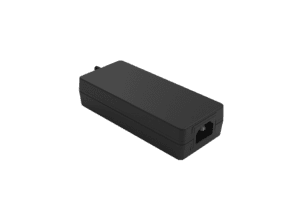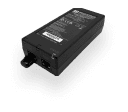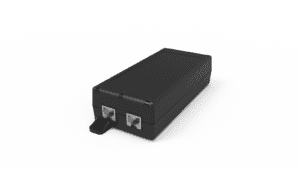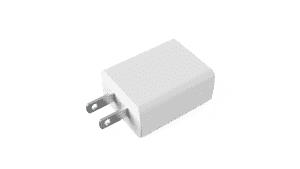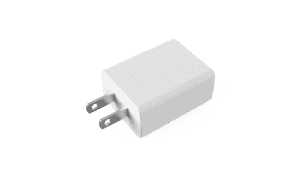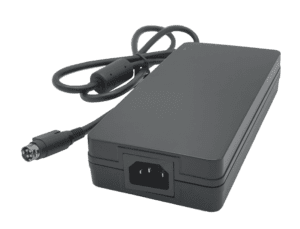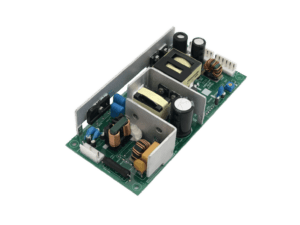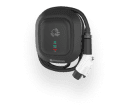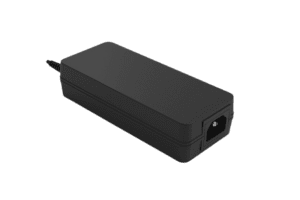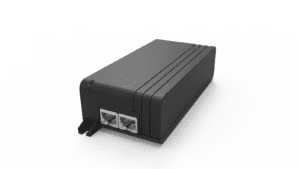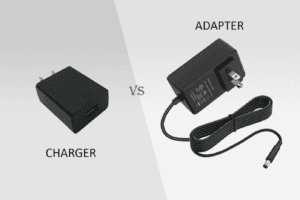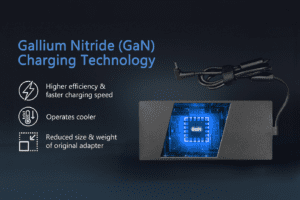BLOG
Outdoor Robot Dock Manufacturer: How to Deploy Weatherproof Charging Shelters for Security Robots
QUICK LINKS
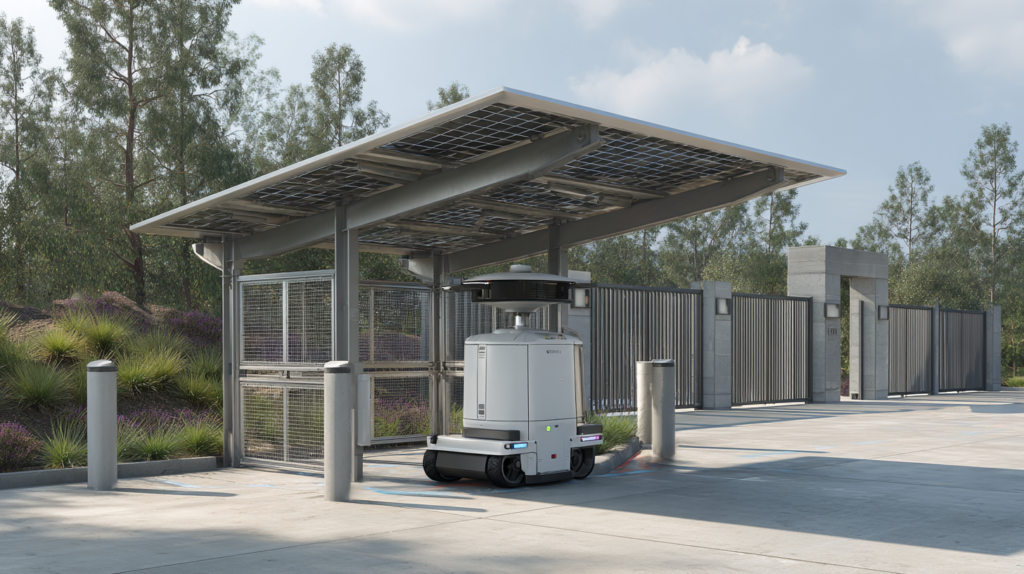
Why Outdoor Security Robots Require Weatherproof Charging Infrastructure
Security robots are now patrolling campuses, malls, parking lots, airports, and critical infrastructure sites around the clock. These mobile units provide real-time surveillance, anomaly detection, and perimeter protection—but like all autonomous systems, they need reliable power to stay operational. In outdoor deployments, this means building weatherproof charging shelters that offer both consistent charging and environmental protection.
These shelters are more than just enclosures. They must be engineered to withstand:
- Rain, snow, and wind
- UV exposure and temperature swings
- Dust, debris, and high-traffic pedestrian zones
A reliable dock ensures that the robot can autonomously return to base, charge safely, and resume patrol without human intervention. For 24/7 deployments, charging shelters must be designed to protect electrical components while allowing fast, repeatable robot alignment and contact.
Top Features
- IP-rated power enclosures and sealed connectors
- UV-resistant housing with drainage and airflow control
- Automatic docking and charging contact interfaces
Top Benefits
- Ensures uptime and mission continuity in outdoor security operations
- Reduces field failures and water-related malfunctions
- Extends equipment life in harsh seasonal environments
Best Practices
- Design shelters into robot patrol zones for short return paths
- Use predictive charging during low-risk periods
- Provide backup power options for blackout resilience
In outdoor security applications, the charging dock becomes the robot’s lifeline—and weather resistance is the difference between continuous coverage and system downtime.
Engineering IP-Rated Charging Enclosures for Harsh Environments
To reliably support robots operating in unpredictable conditions, charging shelters must meet or exceed IP65, IP66, or IP67 ingress protection standards. This requires careful selection of materials, fasteners, seals, and thermal management strategies.
Key elements of an IP-rated enclosure include:
- Sealed gasketed seams that resist water spray and dust ingress
- Overhanging or sloped roofs to prevent pooling water
- Cable glands or potted exits for wiring without breach points
- UV- and corrosion-resistant materials, such as anodized aluminum, stainless steel, or weather-grade polymers
Ventilation must be addressed without compromising waterproofing. Passive vents with hydrophobic membranes or filtered breather valves allow heat and humidity to escape without permitting water entry. In colder climates, thermostatically controlled heaters can prevent internal condensation and ensure battery-friendly temperatures.
Top Features
- NEMA or IP-certified enclosures with wide thermal ratings
- Hinged or removable panels for easy servicing
- Passive or active cooling systems with waterproof air channels
Top Benefits
- Protects critical electronics from water and temperature damage
- Maintains long-term dock function with minimal servicing
- Supports deployment in any outdoor environment, from urban to remote
Best Practices
- Use salt-spray-tested coatings for coastal regions
- Ensure all service points remain tool-accessible and sealed
- Test enclosure under simulated rainfall and environmental cycling
When built correctly, these shelters become fail-safe havens for autonomous systems exposed to the elements every day.
Docking Alignment and Contact Design for Autonomous Security Patrols
Security robots must be able to dock autonomously, often in low-light or rain-soaked conditions. This means the mechanical docking system must be both precise and forgiving. A successful outdoor dock balances tight electrical tolerance with generous physical alignment windows, allowing consistent contact without perfect positioning.
Mechanical aids like:
- Tapered guide rails
- V-shaped funnels
- Fiducial markers for visual SLAM
- RFID tags or magnetic strips
…can help ensure that the robot approaches the dock from the correct angle and aligns smoothly even with moderate drift. Once in place, spring-loaded pogo pins, copper pads, or magnetic charging heads provide electrical contact. These must be resistant to corrosion, wear, and misalignment.
The dock must also confirm robot presence and validate safe charge contact before energizing the power path—this prevents short circuits, arcing, or heat build-up from partial or unstable connections.
Top Features
- Self-centering mechanical structures with damped impact zones
- Contact redundancy (e.g., 2 pins per polarity)
- Docking feedback via sensor or visual confirmation
Top Benefits
- Allows reliable charging with minimal robot calibration
- Reduces wear on docking interfaces
- Supports fleet-wide deployment without excessive infrastructure changes
Best Practices
- Design contact heads to self-clean with each engagement
- Validate tolerances across robot generations or models
- Use firmware to detect full engagement before power-on
Charging shouldn’t require precision driving—it should be engineered to “just work,” every time.
CLIENT'S QUOTE
"Phihong’s PoE solutions have made a huge difference for us! Our network runs more efficiently, and we’ve seen real cost savings. We couldn’t be happier!"
Power System Requirements for Fast, Safe Charging in Outdoor Docks
Power delivery in outdoor charging stations must be fast, stable, and safe. Security robots typically operate on 24 V, 36 V, or 48 V lithium-ion packs and require 500 W to 2 kW of charging power, depending on their size, battery capacity, and duty cycle.
Outdoor chargers must be:
- High-efficiency (92–95%) to reduce heat
- Designed with power factor correction (PFC) for grid compliance
- Built with insulation and surge protection for exposed conditions
Fast-charging docks may also feature CC/CV profiles, battery pre-charge routines, or temperature-compensated current curves. Safety systems should include:
- OVP, OCP, SCP, and OTP protection
- Ground fault detection
- Contact sequencing to avoid arcing on misalignment
The system should communicate with the robot’s battery management system (BMS) via CANBus or UART to negotiate proper charge settings.
Top Features
- AC-DC or DC-DC modules with IP-rated housing
- Smart charge controller with programmable output
- Isolated ground paths and lightning surge arrestors
Top Benefits
- Prevents under- or over-charging in variable grid or temperature conditions
- Maximizes robot uptime with fast turnaround
- Minimizes maintenance costs and field failures
Best Practices
- Design chargers for thermal resilience under sunlight and rain
- Use thermally conductive enclosures to manage heat without airflow
- Support BMS handshaking before full current ramp-up
Outdoor robot charging must be as fast and safe as its indoor counterpart—but built to take a beating from nature.
Smart Monitoring, Telemetry, and Security Integration
Outdoor charging shelters must go beyond power delivery. In modern deployments, charging stations double as smart endpoints that collect data, monitor health, and integrate with central security systems.
Sensors in the dock can monitor:
- Battery temperature and SoC
- Docking success/failure logs
- Charge duration and energy delivery
- Tampering or vandalism
This data can be sent via cellular, Ethernet, or LoRaWAN back to a control room or fleet management system. Remote diagnostics allow operators to:
- Identify charge anomalies
- Predict battery degradation
- Respond to dock failures before the robot mission is interrupted
Security integrations may also include:
- Cameras on the dock
- RFID tag logging
- Integration with surveillance or access control systems
Top Features
- Real-time telemetry API with encrypted communication
- Onboard data logging and timestamped event tracking
- Remote firmware updates and control via web dashboard
Top Benefits
- Supports predictive maintenance and battery health planning
- Enhances situational awareness for remote robot fleets
- Reduces emergency dispatches and improves support response time
Best Practices
- Install cellular failover or backup connectivity modules
- Use edge processing for real-time alerts and local log caching
- Link dock data with mission data for complete system health visibility
Outdoor robot docks aren’t just power tools—they’re intelligent field nodes for total fleet reliability.
How Phihong USA Supports Outdoor Robot Dock Manufacturers
Phihong USA delivers high-efficiency, ruggedized, and smart-ready charging platforms designed for outdoor autonomous robot deployments. Our power solutions meet the highest standards for ingress protection, energy delivery, and embedded system integration.
We offer:
- IP67-rated charging modules (500 W to 2 kW)
- Sealed pogo-pin contact kits with optional magnetic assist
- Thermal-optimized enclosures with solar/load cycling validation
- CANBus, UART, and API-ready telemetry firmware
- Pre-tested compliance for UL, CE, FCC, and IEC standards
- Engineering support for custom enclosure and connector design
Whether you’re deploying delivery, surveillance, inspection, or security bots, Phihong helps you scale your outdoor charging infrastructure with weatherproof, intelligent, and field-ready solutions.
Start your project at www.phihong.com or contact usasales@phihongusa.com.

Contact Our Team Today!
Our dedicated sales team and international partners are prepared to support you with your latest projects and initiatives globally.
Explore More with Phihong USA
As we conclude our exploration of PoE technology, it’s evident how these innovations are streamlining power and data integration across various industries. Phihong USA stands at the forefront of this technological advancement, offering a diverse range of power solutions designed to meet the evolving needs of modern industries.
Phihong USA’s extensive product lineup includes:
- Power over Ethernet (PoE) Solutions: Delivering reliable power and data transmission over a single cable, ideal for simplifying network installations and reducing costs.
- AC/DC Adapters and Power Supplies: From compact adapters to industrial-grade power supplies, Phihong provides solutions that ensure efficiency and reliability in various applications.
- Battery Chargers: Customizable chargers for lithium-ion and lead-acid batteries, supporting a wide range of power requirements for mobility and industrial applications.
- Medical Power Supplies: Specialized power solutions designed to meet the stringent requirements of the healthcare industry, ensuring safety and reliability.
Phihong USA is committed to innovation and excellence, continually developing products that meet the highest standards of performance and reliability. Their global reach and dedication to customer support make them a trusted partner in powering the future.
Here are some useful links to explore Phihong USA’s offerings further and bring in new potential clients:
Visit Phihong USA to discover how their advanced power solutions can support your business needs. Whether you’re looking to upgrade your network, or find reliable power supplies, Phihong USA has you covered.
By choosing Phihong USA, you’re partnering with a leader in power technology, ensuring your operations run smoothly and efficiently with top-tier power solutions. Contact Us today!
FAQ
What does IP67 mean for robot charging docks?
IP67 is a global ingress protection standard indicating that a device is completely protected against dust (6) and can withstand immersion in water up to 1 meter deep for 30 minutes (7). For outdoor robot charging docks, IP67 means the enclosure and contact system can handle heavy rain, splashing, and environmental exposure without water entering the electronics.
To achieve this, manufacturers use gasket-sealed enclosures, potted cables or glands, waterproof contact points, and vent membranes to equalize pressure without letting moisture in. IP67 compliance is essential for docks placed in public areas where environmental exposure is constant.
At Phihong, our IP67-certified modules undergo immersion, thermal, and impact testing to ensure they work reliably in real-world rain, dust, and wind conditions. Whether your robot returns to base in a storm or under full sun, an IP67-rated dock ensures safe, sealed, and uninterrupted charging.
How do outdoor docks protect against vandalism and tampering?
Outdoor docks are deployed in public or semi-public spaces, so protection against vandalism, physical tampering, and accidental damage is critical. This starts with rugged mechanical design: impact-resistant enclosures (often metal), recessed contact points, and locked access panels prevent unauthorized interaction.
Electronics are internally shielded or completely sealed, while firmware restricts charging to known devices—often via RFID, handshake protocols, or BMS ID verification. Tamper-detection sensors or accelerometers can alert operators if the dock is bumped, moved, or tampered with.
Cameras, lighting, or integration with site-wide security systems also help protect charging assets and deter misuse. Phihong’s charging solutions include tamper detection and access control options, plus loggable error events and remote shutdown in the event of detected interference.
Can outdoor docks integrate with security fleet systems?
Yes. Most professional outdoor security robots are part of a broader fleet managed via centralized platforms—often hosted in the cloud or an on-site NOC (network operations center). Charging docks can integrate via:
- CANBus or UART communication
- RESTful APIs or MQTT telemetry
- Data logs transmitted via Wi-Fi, Ethernet, or cellular
Integration allows for dynamic scheduling of charge windows, health alerts (battery temperature, failure codes), and task allocation based on charge status. Phihong docks are built to talk directly to the robot or its fleet management software, allowing complete ecosystem visibility and proactive power routing.
What charging speed is best for outdoor security robots?
Most outdoor security bots use lithium-ion packs ranging from 0.5 kWh to 2 kWh. Depending on mission duration and patrol area, charging speeds of 500 W to 1.5 kW are ideal to balance fast turnaround with battery health.
Fast charging ensures bots can dock briefly between patrols and stay active for multi-hour sessions, especially during peak periods. Phihong’s smart chargers automatically adjust current based on BMS data, and offer programmable profiles for different robot models. We help OEMs tune charge logic for runtime optimization without thermal stress or premature battery degradation.
How does Phihong USA support outdoor dock development?
Phihong provides:
- Fully weatherproof power modules
- Engineering for custom dock mechanics and contact systems
- Embedded firmware for secure robot handshake and diagnostics
- Pre-tested solutions for UL, CE, FCC, and IP certification
- API integration for fleet and charge management systems
From idea to deployment, we help OEMs create rugged, scalable, and smart outdoor charging infrastructure for autonomous security and delivery fleets.

